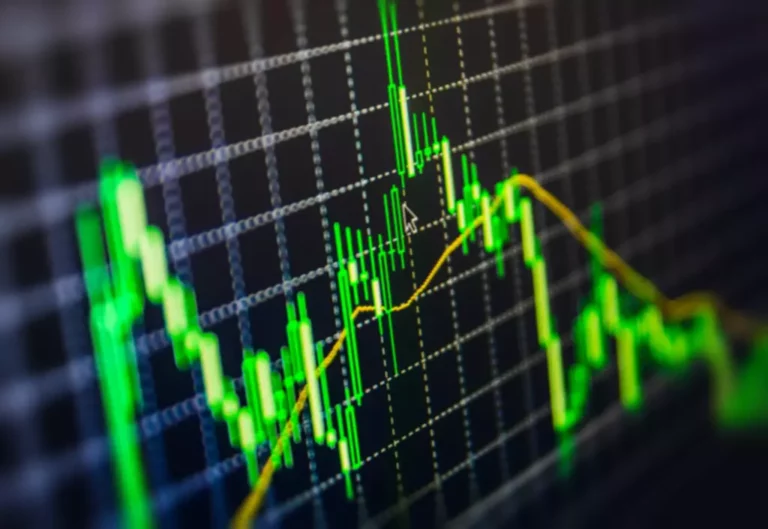Content
While exchanges argue that they are selling services equally to all participants, critics point out that it entrenches the position of dominant HFT firms. There are also fears that retail investors will suffer due to HFT activity. Either way, high-frequency trading https://www.xcritical.com/ has significantly influenced the structure of financial markets.
What is high-frequency trading?
Spot Gold and Silver contracts are not subject to regulation under the U.S. Before deciding to trade forex, commodity futures, or digital assets, you should carefully Mining pool consider your financial objectives, level of experience and risk appetite. You should consult with appropriate counsel or other advisors on all investment, legal, or tax matters.
High Frequency Trading Strategy – What Is It and How to Get Started

HFT also reduces short-term volatility by supplying liquidity during turbulent periods. While long-term investors sometimes exit positions and withdraw from the market during turmoil, HFT systems typically operate non-stop with fixed risk parameters. Their continuous quoting activity calms volatile swings and mitigates price dislocations. Index arbitrage is a valuable tool for enabling passive funds to operate efficiently when used properly. HFT helps narrow significant short-term disparities high frequency forex trading through sophisticated models and microsecond speed.
What Are the Drawbacks of High-Frequency Trading?
As orders are matched directly between participants, the time it takes for a trade to be executed is minimal. This is a significant advantage for traders looking to execute high-frequency strategies or those who need to take advantage of quick market movements. Since there are no intermediaries involved in the trade process, orders are filled almost immediately, as long as liquidity is available. This makes ECN trading particularly attractive for high-frequency traders, scalpers, and those who engage in short-term trading strategies. One of the most critical elements of ECN trading is the liquidity that is provided by various participants.
This should lead to narrower bid-ask spreads and more efficient markets. However, some critics argue that HFT firms may quickly withdraw their trades when there’s market stress, setting off more volatility and making it harder for other traders to buy or sell their positions. High-frequency trading strategies may use properties derived from market data feeds to identify orders that are posted at sub-optimal prices.
Opportunities arise around index rebalances when passive funds must buy and sell to match new weights. They trade the overvalued stock against the lagging ETF to profit when pricing corrects back to equilibrium. After the “flash crash,” regulations introduced quote minimum life and “speed bumps” in market data. While reducing costs for investors, fast market-making raises fairness concerns. The rapid rise of high-frequency trading came into the public spotlight in the May 6, 2010, Flash Crash.
Critics see high-frequency trading as unethical and as giving an unfair advantage for large firms against smaller institutions and investors. Stock markets are supposed to offer a fair and level playing field, which HFT arguably disrupts since the technology can be used for ultra-short-term strategies. Company news in electronic text format is available from many sources including commercial providers like Bloomberg, public news websites, and Twitter feeds.
Such an attack involves flooding a targeted network or server with internet traffic to the point that its normal operations are disrupted. When using a microservice design, schedulers aim to reboot a failing service quickly. In order to prevent extreme market volatilities, circuit breakers are being used. It is the submissions and cancellations of a large number of orders in a very short amount of time, which are the most prominent characteristics of HFT. We have shared details and how you can explore and learn about high frequency trading jobs in a separate blog. High Frequency Trading market-makers are required to first establish a quote and keep updating it continuously in response to other order submissions or cancellations.
- HFT originated in the late 20th century as computerized trading technology advanced and financial markets grew in complexity.
- It has become an HFT juggernaut with over 100 employees across offices in Mumbai, Delhi, and Bangalore.
- If you have profits and losses for IRS Section 1256 contracts, such as straddles, these are reported on Form 6781, which automatically applies the 60/40 split.
- The phenomenon of “spoofing” and “layering” by HFTs has drawn scrutiny.
- It is important to accurately keep records and speak to a tax professional to ensure compliance.
In the 2010s, HFT faced increased scrutiny and criticism from regulators and the public. In the US, the SEC looked at ways to monitor HFT firms and make sure their systems did not malfunction. Also in 2010, author Michael Lewis published Flash Boys, which criticized HFT for using speed advantages to profit at the expense of other investors. The book further turned public sentiment against unregulated HFT practices. Index arbitrage strategies revolve around index tracker funds that buy and sell securities based on their changing weights in indices.

Since all quote and volume information is public, such strategies are fully compliant with all the applicable laws. Additionally, the Securities and Exchange Commission believes HFT is an issue. In February 2024, the commission adopted rules that required firms acting like dealers to register as dealers (if they handle assets valued at more than $50 million). HFT firms act as dealers because they take both sides of trades and trade at “…a high enough frequency to play a significant role in price discovery and provision of market liquidity…”
Many firms are founded by former exchange traders or tech experts and start with their own capital. Tick trading focuses on identifying the beginnings of large orders entering the market. For example, when a pension fund begins a substantial buying order, it may take place over hours or days, causing a rise in the asset’s price due to increased demand. An arbitrageur tries to detect this and profit from selling back to the pension fund. However, this strategy has become more challenging with the introduction of dedicated trade execution companies. Estimates put about half of all trading across the U.S. (up to 60%) and Europe (about 35%) in the high-frequency category.
For high-volume futures traders, this means predictable tax benefits and improved after-tax returns. While ECN platforms offer tight spreads and quick execution, there can still be instances of slippage during periods of extreme volatility. If liquidity is low or if the market is moving too quickly, orders may not be executed at the exact price requested. However, this is generally less of an issue than with market makers, who may intentionally widen spreads during high volatility. ECN trading ensures that all participants have access to the same pricing information.
Quota stuffing works by exploiting the limit order book system used by stock exchanges. The limit order book shows all outstanding buy and sell orders for stock, organized by price level. Traders look to the order book for indications of supply and demand imbalances to inform their trading. After thorough testing, the firm started trading cautiously with small volumes to confirm that the systems worked as expected.
By processing vast amounts of market data and reacting swiftly to news and events, HFT algorithms help prices reflect relevant information accurately and in a timely manner. Market makers continuously quote both buy and sell prices for specific securities, ensuring that there is always a counterparty available for traders looking to buy or sell. This improves market efficiency and reduces transaction costs for all participants. Additionally, HFT firms invest heavily in low-latency infrastructure, utilizing cutting-edge technology and high-speed data connections to ensure minimal delays in executing trades. These infrastructure enhancements enable HFT traders to exploit even the smallest market inefficiencies.